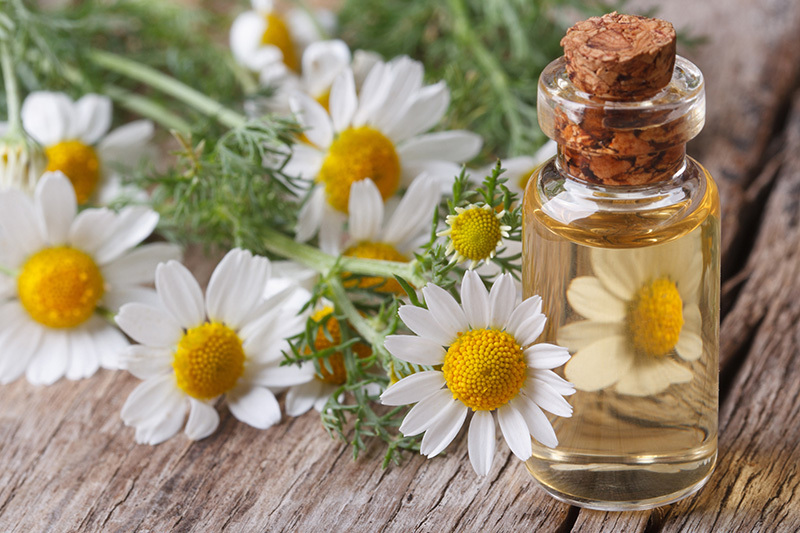Mastering the Art of Preserving Cut Flower Bouquets
Posted on 26/08/2025
Mastering the Art of Preserving Cut Flower Bouquets
Flowers have enchanted humans for centuries with their vibrant colors, delicate fragrances, and unique ability to enliven any space. Yet, the inevitable fading and wilting of cut blossoms can be a disappointment. If you're someone who treasures the beauty of fresh bouquets and wishes to extend their lifespan, then mastering the art of preserving cut flower bouquets is an invaluable skill. This comprehensive guide explores science-backed techniques, creative strategies, and expert tips to help you keep your bouquets looking luscious and beautiful for as long as possible.
Why Do Cut Flowers Wilt?
To understand the essence of flower preservation, it's crucial to first grasp why cut flowers wilt. The moment a flower is snipped from its plant, it loses its primary source of water and nutrients. Left unchecked, bacteria quickly multiply in the vase water, clogging the stems' vascular systems and accelerating decay. Furthermore, without their roots, flowers struggle to obtain enough hydration, resulting in limp petals and shriveled leaves.
Key Factors That Cause Flower Decay:
- Bacterial growth in water
- Lack of hydration and nutrient supply
- Exposure to ethylene gas (produced by ripening fruits and decaying foliage)
- Improper cutting of stems
- Unsuitable environmental conditions (heat, direct sunlight, and drafts)

Essential Supplies for Cut Flower Preservation
To begin your journey towards preserving bouquets, assemble the following tools and supplements:
- Clean, sharp scissors or floral shears
- Sterilized vases or jars
- Floral preservative sachets or homemade flower food
- Distilled or filtered water
- Bleach or white vinegar (for cleaning purposes)
- Plant mister (optional)
Prepping Your Cut Flower Bouquet for Longevity
Proper Stem Trimming: The Secret to Lasting Blooms
The first step towards successful cut flower bouquet preservation is trimming the flower stems correctly. Use sterilized, sharp shears to cut 1-2 inches off each stem at a 45-degree angle. This creates a larger surface area for water absorption and prevents stem ends from sitting flat at the vase bottom, which can restrict water uptake.
- Tip: Always trim stems under running water to avoid air bubbles that can hinder hydration.
- Re-trim stems every 2-3 days to keep them fresh and unblocked.
Remove Foliage Below the Water Line
Leaves submerged in vase water break down quickly, providing the perfect environment for bacterial growth. Always strip away any greenery that would be below the water before arranging your bouquet. This simple act is a cornerstone of flower bouquet preservation.
Flower Food and Other Additives: Enhancing Floral Longevity
Commercial Flower Preservatives
Most florists provide commercial flower preservatives with purchased bouquets. These sachets contain a balanced mix of sugars (nutrients), an acidifier (reduces water pH for optimal uptake), and a biocide (minimizes bacterial growth). Always use them according to the package instructions.
DIY Flower Food Recipes
If you don't have access to commercial options, you can create your own solution to help preserve your cut flowers:
-
Classic Homemade Flower Food:
- 1 quart lukewarm water
- 2 tablespoons lemon juice or vinegar
- 1 tablespoon sugar
- 1/2 teaspoon bleach
*Mix and use in your vase. The sugar feeds the blooms, the acidifier improves water intake, and the bleach fights bacteria.*
-
Penny Trick:
Add a copper penny to the vase.
Copper acts as a fungicide, discouraging bacteria and fungi from proliferating.
Strategic Vase Placement: Maximize Your Bouquet's Freshness
Where you place your bouquet significantly impacts its longevity. For optimal preservation of cut bouquets, follow these guidelines:
- Avoid Direct Sunlight: Sun hastens blooming and wilting.
- Keep Away from Heat Sources: Radiators, appliances, and electronics can dry out flowers.
- Steer Clear of Drafts: Constant air flow saps moisture.
- Separate from Fruit Bowls: Ripening fruit emits ethylene gas, which accelerates decay.
*The best spot is a cool, shaded area with stable temperature and humidity.*
Daily Maintenance and Care Tips
Creating a sustainable environment is key in extending the life of fresh flower bouquets. Here's how to make your blooms last as long as possible:
Change Vase Water Regularly
- Change the water every one to two days. Dump stale water and refresh the vase with clean, room-temperature water. Rinse the stems gently under running water to remove slime or blockages.
This prevents bacteria from overwhelming your bouquet.
Prune Dead or Wilting Blooms
- Remove fading flowers promptly. Decaying material releases ethylene, which shortens the life of the entire arrangement.
Additional Care Tips:
- Mist petals gently to provide extra moisture (especially in dry environments).
- Re-cut stems every 2-3 days to maintain water uptake.
- Clean vases thoroughly between bouquet changes to prevent the buildup of bacteria or fungus.
Special Techniques for Preserving Flower Bouquets
Refrigeration
Many florists store unused arrangements in refrigerated rooms overnight - and you can replicate this at home. Before bed, place your cleaned vase and bouquet in the fridge (not the freezer!). Cooler temperatures help flowers rest, slow metabolism, and delay wilting. Just make sure your fridge is empty of fruits or vegetables, to avoid exposure to harmful ethylene gas.
Water Temperature Matters
- Most flowers prefer lukewarm water, which is absorbed faster than cold.
- Bulb flowers (like tulips and daffodils) benefit from cool water instead.
- Revive wilting blooms by fully submerging the stems (and even heads, if possible) in tepid water for 30-60 minutes.
Supporting Stems: Upright Beauty
- Use clear floral tape to create a grid across the vase opening. This helps support heavy or floppy blossoms, especially roses and peonies.
Advanced Strategies for Flower Bouquet Preservation
Glycerin Preservation Method
For a semi-permanent bouquet, glycerin preservation is a popular technique. Glycerin replaces water in the stems, creating flexible, long-lasting flowers with a slightly darker hue. Here's how to try it:
- Mix 1 part glycerin with 2 parts hot water.
- Cut stems freshly and insert into the solution for 2-3 weeks.
- Flowers are preserved when petals and leaves feel slightly leathery.
This works best for sturdy flowers like eucalyptus, roses, and magnolia.
Silica Gel Drying
If your end goal is to keep your bouquet indefinitely, consider silica gel drying. Pour a layer of silica gel crystals into an airtight container, nestle your flowers inside (ensuring petals and stems are fully covered), and leave undisturbed for a week or more. This technique preserves color and form, perfect for memory bouquets.
Air Drying and Pressing
- For rustic charm, tie your bouquet and hang it upside down in a dry, dark room.
- Alternatively, press flowers between parchment sheets and heavy books for delicate, two-dimensional art.
While these methods don't maintain freshness, they immortalize the beauty of a special arrangement.
Common Cut Flower Types and Their Care
Roses
- Remove guard petals and thorns; re-cut stems above the node to prevent bacterial blockages.
- Roses benefit from warm water and daily misting.
Lilies
- Remove pollen-laden stamens to avoid staining and premature wilting.
- Lilies last longer in cool, indirect light.
Tulips
- Tulips continue to grow after being cut--so tall stems may droop. Support with tape grids or other flowers.
- Use only cold water for tulip arrangements.
Sunflowers
- Sunflowers drink a lot of water--monitor and replenish daily.
- Trim stems frequently and avoid crowding in vases.
Hydrangeas
- Hydrangeas are prone to wilting; submerge heads in water to revive if they droop.
- Cut stems under very hot water for maximum hydration.
Myths About Preserving Cut Flowers
- Myth: Aspirin always extends bloom life.
Reality: Some believe it acidifies water, but results are inconsistent and it's no more effective than basic flower food. - Myth: Vodka or spirits keep flowers fresh.
Reality: Only a tiny drop is needed, if at all. Too much alcohol is toxic to flowers. - Myth: Sugar water works best.
Reality: Sugar alone can feed bacteria if not balanced by bleach, vinegar, or citric acid.

Frequently Asked Questions about Preserving Cut Flower Bouquets
1. How long should a well-maintained bouquet last?
Depending on the flower types and care, most bouquets look fresh between 7 to 14 days. Some robust varieties like carnations and chrysanthemums can last up to 3 weeks.
2. Are there flowers that last longer than others?
Yes! Carnations, alstroemeria, chrysanthemums, orchids, and lilies are celebrated for their longevity in arrangements.
3. Is it necessary to refrigerate flowers at night?
While not required, refrigeration can extend the freshness of particularly delicate arrangements or in hot climates.
4. Why do my flowers droop shortly after arranging?
Drooping is often a result of improper cutting, bacterial blockage, or air bubbles in the stems. Re-cut and submerge stems in lukewarm water to revive.
Conclusion: Enjoying Blossoms for Longer
Preserving cut flower bouquets is both an art and science, combining botanical knowledge with practical care. By following the tips in this guide--proper trimming, water maintenance, smart placement, and flower-specific care--you'll achieve stunning arrangements that remain vibrant and fragrant far beyond their average lifespan. Whether you're a casual flower lover or a dedicated home florist, mastering the art of flower bouquet preservation means enjoying nature's beauty in your home for days or even weeks to come.
So, next time you receive or purchase a bouquet, put these strategies into practice and delight in your prolonged slice of floral splendor!
- Remember: Cleanliness, attention to detail, and a little creativity go a long way in preserving your beautiful blossoms!







